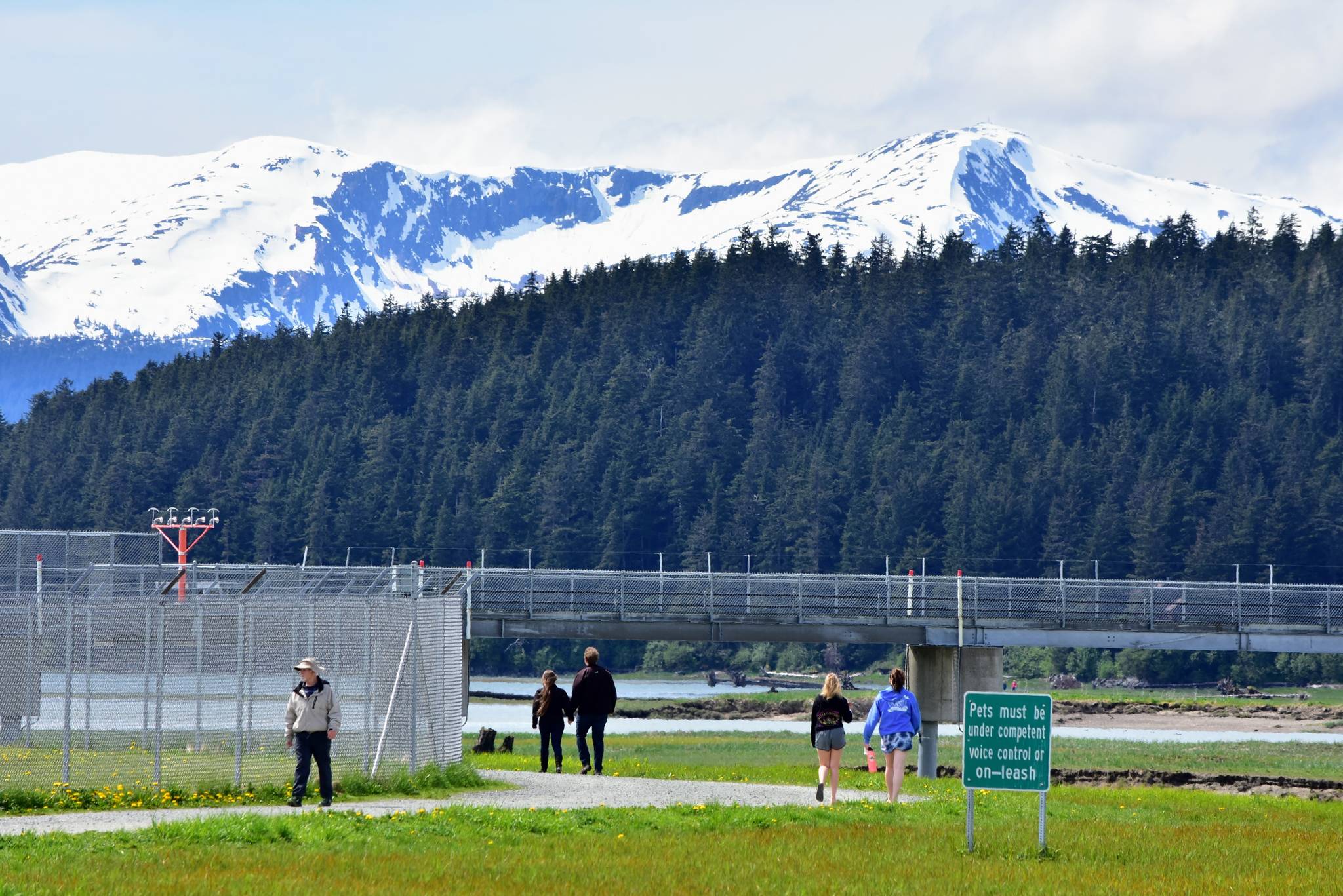City officials are trying to determine the extent of contamination from per- and polyfluoroalkyl substances, commonly known as PFAS, from their use at the Juneau International Airport and have hired a private company to conduct testing in the area. Testing will take place over the next five years to determine the full extent of the contamination, according to airport manager Patty Wahto, who said the testing was part of a national effort to clean up PFAS-contaminated sites across the country.
Preliminary testing showed PFAS contamination at sites where the chemicals had been discharged by Capital City Fire/Rescue during training exercises, Wahto said, and additional testing was now being done in areas around the airport including the Mendenhall Wetlands State Game Refuge. Groundwater monitoring wells were being installed around the airport along the airport’s Emergency Vehicle Access Road, also known as the Airport Dike Trail.
“We’ll be testing those (sites) for a while and monitoring them,” Wahto said in a phone interview Tuesday. “Outside of knowing that they’re drilling people probably won’t even see them.”
Soil sampling can be done fairly quickly, Wahto said, but the wells will have to be in place for a number of years in order to determine any and how much contamination is in the groundwater. Testing is currently scheduled to take place until January 2026.
[State sues DuPont, other PFAS manufacturers]
It’s not currently known if the PFAS contamination has migrated offsite, according to Jolene Cox, owner of Cox Environmental Services, the company contracted by the City and Borough of Juneau to install the monitoring wells. In an email, Cox said analytical results from the contract laboratory are expected in early July. If PFAS contamination is detected in the soil and/or groundwater of the wetlands, Cox said, additional investigation would likely include hydraulically connected surface water.
PFAS contamination has been detected in both the soil and groundwater at the airport, Cox said, and her company is currently working to determine if there has been off-site groundwater migration to the wetlands south of the airport. According to Cox, once the extent of the contamination has been determined, the city will work with the Alaska Department of Environmental Conservation on any monitoring or remediation efforts.
“The CBJ water system currently provides service to the entire project area so exposure from drinking PFAS contaminated groundwater is not an issue in Juneau as it is in some other Alaska communities,” Cox said.
The chemicals used to be regularly discharged at the airport as part of Federal Aviation Administration-required testing and CCFR training, Wahto said, but their use had been greatly curtailed in the past few years. CCFR Chief Rich Etheridge said in an email the department still carries the aqueous film-forming foam which contains PFAS chemicals but does not discharge them unless there is a pool of flammable liquids burning that water mist cannot suppress.
“There is not an approved foam that does the same job or nearly as effective as AFFF that is approved for Crash Fire Response,” Etheridge said. “It is a tool in the box that is available however it is a tool of last resort.”
CCFR stopped training with the foams six years ago following environmental concerns, Etheridge said, and in 2018 the department began using a device that can complete the annual FAA required testing without discharging the foam.
Currently the testing is being paid for out of the airport’s budget, Wahto said, but it’s being tracked as a special project with hopes of being reimbursed by state or federal authorities. In April, the state announced it was joining a lawsuit against a number of PFAS manufacturers including chemical giant DuPont for failing to inform the public about potentially harmful impacts among other allegations. Because the foams containing PFAS were required by the FAA, Wahto said the city was hopeful for federal reimbursement in the future.
Sen. Jesse Kiehl and Rep. Sara Hannan, both Juneau Democrats, introduced a bill in their respective bodies to place limits on future use of PFAS chemicals but both versions of the bill remain in committee until the start of the next regular session.
PFAS chemicals have been found at sites throughout Alaska, including Fairbanks, Yakutat and Gustavus.
“Some of these (monitoring wells) are out a ways and they’re upstream,” Wahto said. “They can test the soil right away but they have to let the groundwater settle.”
• Contact reporter Peter Segall at psegall@juneauempire.com. Follow him on Twitter at @SegallJnuEmpire.

